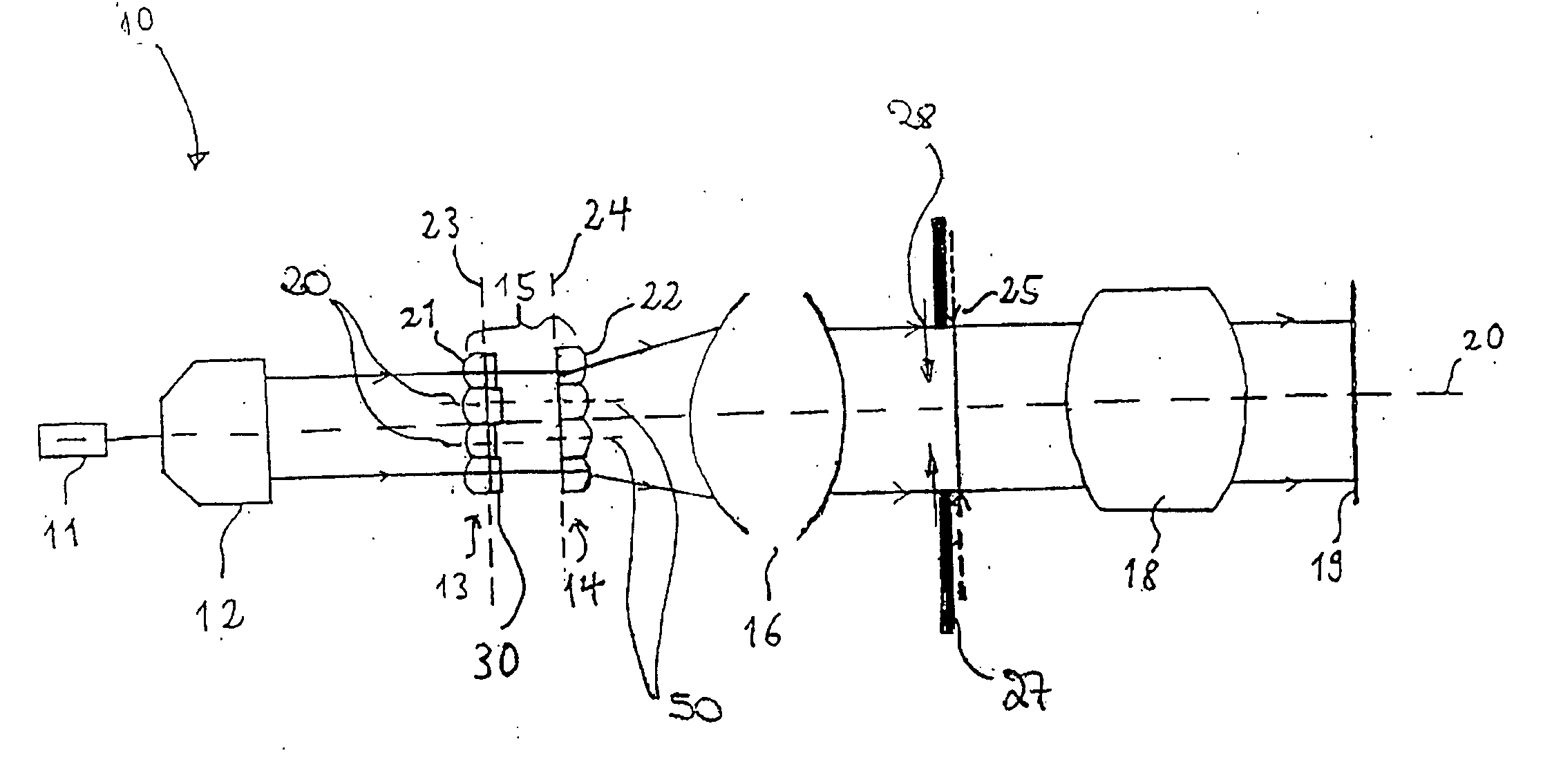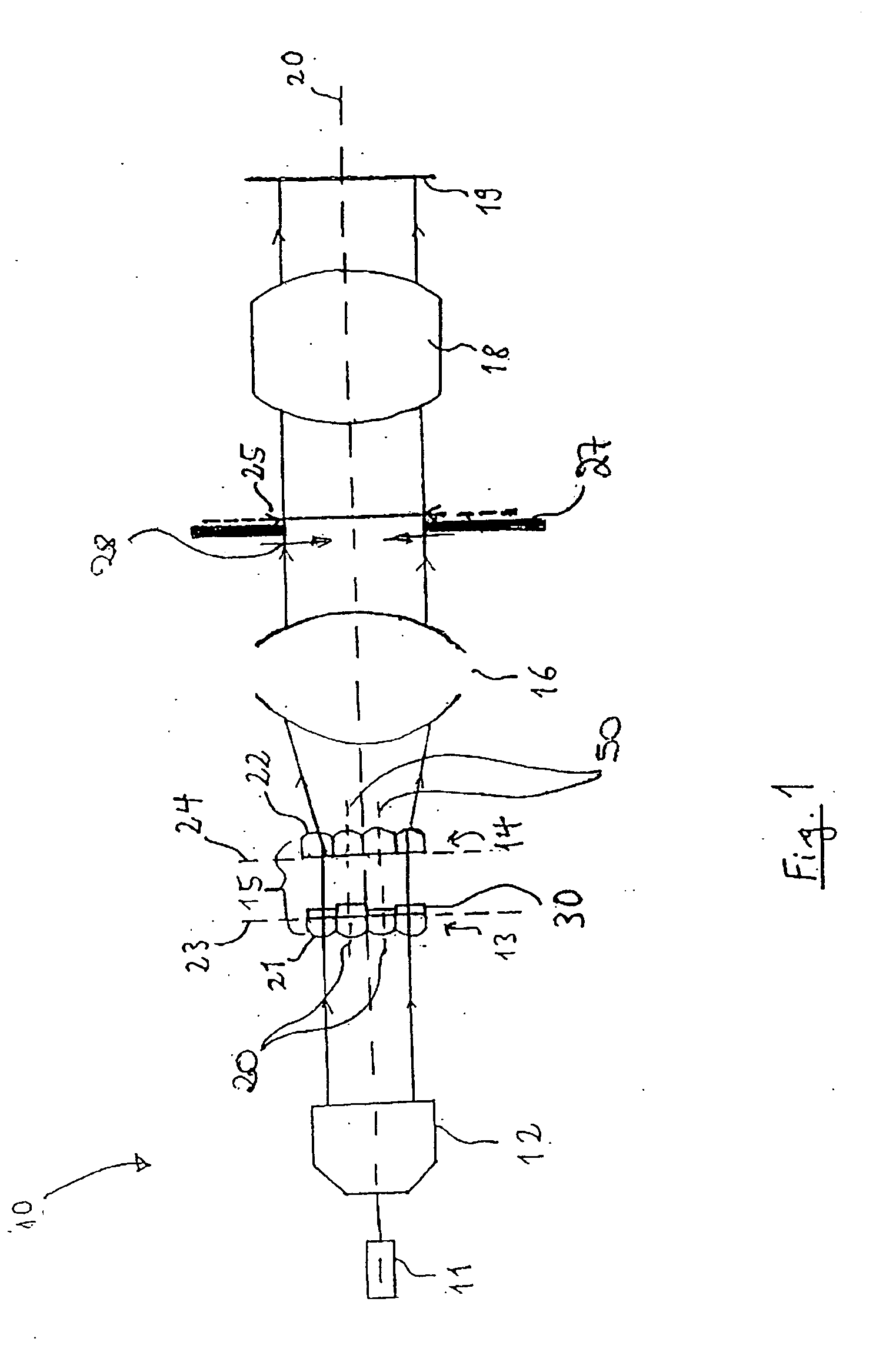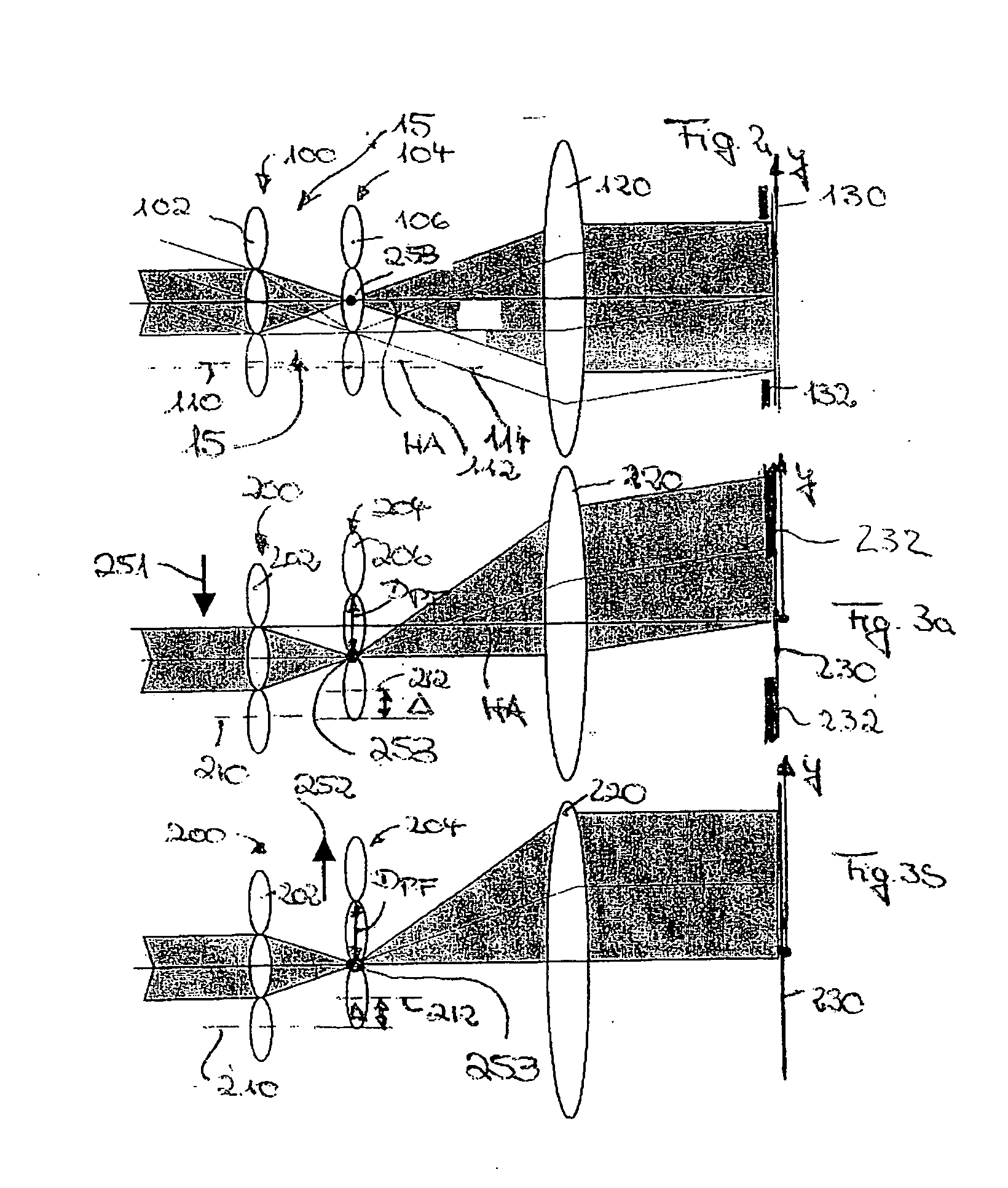Optical device with raster elements, and illumination system with the optical device
- Summary
- Abstract
- Description
- Claims
- Application Information
AI Technical Summary
Benefits of technology
Problems solved by technology
Method used
Image
Examples
Embodiment Construction
[0014] To delimit the field that is to be illuminated, a variable field aperture stop is always used in state-of-the-art systems.
[0015] These illumination systems suffered from the drawback that to form the projected image of the intermediate field plane in which the variable field aperture stop was arranged, the variable field aperture stop was projected into the reticle plane by means of mirrors or a lens system.
[0016] This had the consequence that in reflective systems of the kind that are used for example in EUV lithography, additional mirrors were required which strongly reduced the light yield of the illumination system. In refractive systems, likewise, a complex high-aperture optical imaging system with a large field has to be used which, for example, includes more than seven individual lenses with aspherical surfaces.
[0017] The invention thus has the objective to propose an optical device, in particular for an illumination system in a microlithographic projection exposure...
PUM
 Login to View More
Login to View More Abstract
Description
Claims
Application Information
 Login to View More
Login to View More - R&D
- Intellectual Property
- Life Sciences
- Materials
- Tech Scout
- Unparalleled Data Quality
- Higher Quality Content
- 60% Fewer Hallucinations
Browse by: Latest US Patents, China's latest patents, Technical Efficacy Thesaurus, Application Domain, Technology Topic, Popular Technical Reports.
© 2025 PatSnap. All rights reserved.Legal|Privacy policy|Modern Slavery Act Transparency Statement|Sitemap|About US| Contact US: help@patsnap.com



